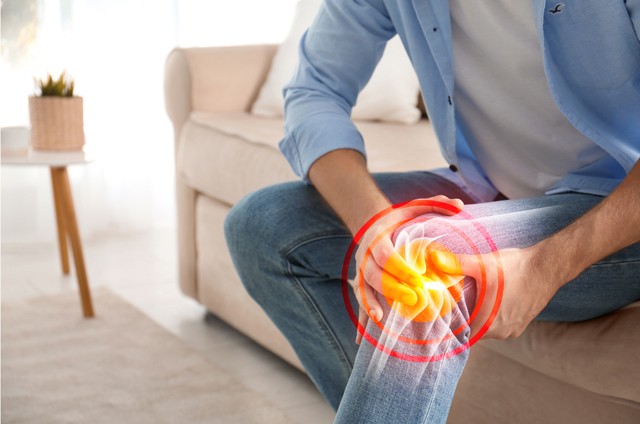Know About Knee Bursitis: Symptoms, Treatment, and Causes
Knee bursitis is inflammation in the bursa, a small fluid-filled sac located near your knee joint. Bursae are responsible for reducing friction and cushioning pressure points between your bones and the tendons, muscles and skin near the joints. When there’s inflammation in the bursa, this can cause pain and limit your mobility.
Fortunately, bursitis responds well to at-home treatments, though you may need to see a doctor as well. Let’s learn more about knee bursitis, the symptoms to watch for and the best treatment approaches.
What Causes Knee Bursitis?
Knee bursitis is often caused by repetitive trauma or irritation, such as frequent kneeling while working or playing sports. Certain conditions can also raise the risk of developing knee bursitis. However, not all cases of knee bursitis have a direct cause. Sometimes it’s unknown what led to the inflammation, making it more difficult to treat.
Here are the main causes of knee bursitis to be aware of:
- Frequent and sustained pressure, such as kneeling on hard surfaces
- Overuse or strenuous activity
- Direct blow to the knee
- Bacterial infection of the bursa (septic bursitis)
- Complications from osteoarthritis or gout
What are the Symptoms of Knee Bursitis?
Bursitis in the knee is a common complaint, but you have a greater chance of developing the condition if you use your knees a lot. For example, if you’re a carpet installer, roofer, housecleaner or athlete, you have a higher risk for knee problems due to prolonged kneeling and frequent falls.
Below are the most common symptoms associated with knee bursitis:
- Warmth around the affected area
- Tenderness
- Swelling
- Pain
How Should You Treat Knee Bursitis?
If you believe that you have bursitis in your knee, schedule an appointment with a pain management or sports medicine doctor. They will perform a medical history and physical exam to rule out other conditions. It’s helpful to understand what caused bursitis so that your doctor can determine the appropriate treatment.
The best ways to treat knee bursitis are:
- Lifestyle modifications. To ease knee bursitis, follow RICE. Rest your knee, apply Ice, apply Compression and Elevate your knee. Also, take over-the-counter pain relievers for discomfort.
- Medications. If an infection caused your bursitis, your doctor will prescribe a course of antibiotics.
- Steroid injections. Corticosteroid injections are administered into the bursa to reduce inflammation. If you’re not responding to other treatments, your doctor may recommend injections.
- Therapy. Your sports medicine doctor may refer you to a physical therapist who can help improve your flexibility and strengthen your muscles. This can help reduce recurrent episodes of bursitis.
- Surgery. In cases of recurrent or chronic knee bursitis, surgery may be required to remove the bursa.
If you are struggling with knee bursitis, schedule an appointment with the sports medicine specialists from Jersey Rehab. We can quickly diagnose the issue and come up with a treatment plan that gets you out of pain and back to doing what you love.

